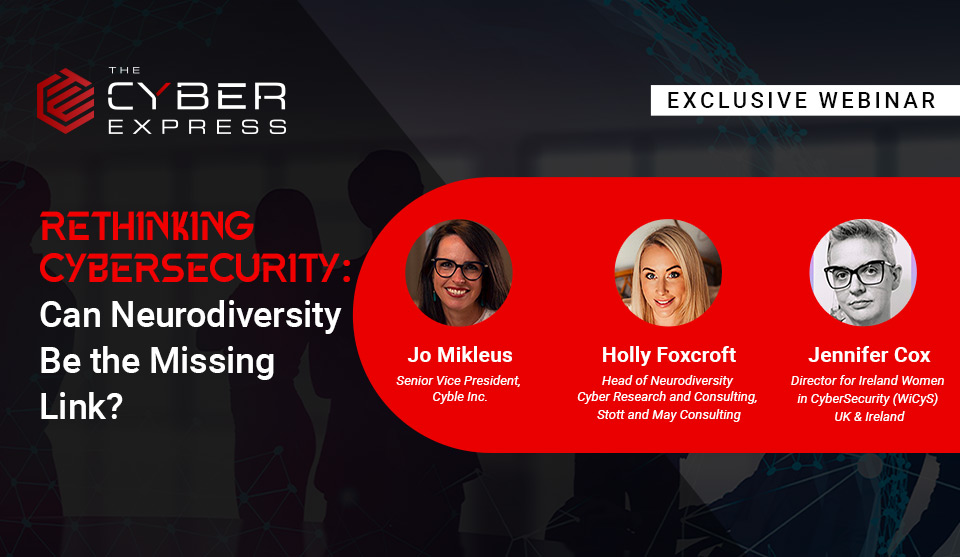Imagine a team of brilliant detectives, each with their own quirks and talents. One might be a meticulous observer, another a whiz at puzzles, and the third a master of creative leaps. This diverse team is unstoppable, able to crack any case because their strengths complement each other.
That’s the power of neurodiversity in cybersecurity!
People with autism, ADHD, dyslexia, and other conditions bring fresh and valuable perspectives to the fight against cybercrime, enhancing the ability to address complex challenges in innovative ways. They excel at spotting patterns, focusing intensely, and thinking outside the box – exactly what defenders need to outsmart hackers.
Neurodiversity in cybersecurity is a concept that has gained significant traction over the past decade. The term “neurodiversity” originated in the late 1990s and has since evolved to encompass a range of conditions, not as limitations, but as strengths.
Within the industry, this movement gained momentum around the mid-2010s. It stemmed from a critical need for diverse problem-solving skills and innovative thinking.
Cybersecurity challenges are complex puzzles, requiring a variety of approaches to detect, analyze, and mitigate threats. By embracing neurodiversity, the industry doesn’t just improve its capabilities, it sets a standard for inclusivity. It taps into a pool of untapped talent that perceives and interacts with the world in ways that benefit everyone.
To celebrate this diversity, The Cyber Express hosted the “Inclusive Cyber” webinar. The event brought together experts to discuss how neurodiversity, with its wide range of cognitive styles and personalities, significantly enhances the field of cybersecurity. It’s a space where innovation and diverse perspectives are not just beneficial, but essential.
Speakers’ Insights on Neurodiversity in Cybersecurity
The webinar featured renowned cybersecurity champion Holly Foxcraft, recognized as one of the most influential women in the field. Alongside her was security wiz and advocate Jennifer Cox, Director for Ireland at Women in Cyber Security (WiCyS) UK & Ireland and a Security Engineering Manager at Tenable. The session was moderated by Jo Mikleus, Senior Vice President at Cyble, who skillfully facilitated the discussion, highlighting the critical role of inclusive practices in cybersecurity.
Both speakers shared their personal and professional experiences with neurodiversity, providing valuable insights into the integration of neurodivergent professionals in the tech industry.
Holly Foxcraft initiated the discussion by defining neurodiversity and its societal implications. She highlighted how societal norms often fail to accommodate the diverse ways individuals process information, which can lead to misunderstandings and underutilization of potential.
Foxcraft explained, “Neurodiversity means that just like physical traits, our cognitive differences are natural. Society, however, has established certain expectations about how individuals should behave and process information. Deviations from these norms are termed as neurodivergence, encompassing recognized conditions such as autism and ADHD, and broader, undefined behaviors that diverge from what is considered typical.”
Following Holly’s introduction, Jennifer Cox discussed the common misconceptions about neurodivergent individuals, especially those with ADHD. She expressed, “There’s a prevalent myth that individuals with ADHD have boundless energy, which is far from reality. Managing everyday conversations can be as draining for us as physical exertion, leading to rapid burnout.”
Cox also shared her personal journey with ADHD, diagnosed in her forties, underscoring the challenges and late realizations many neurodivergent individuals face.
Challenges Faced by Neurodivergent Professionals
Jennifer Cox further addressed the managerial misconceptions surrounding the support needs of neurodivergent employees. She clarified that contrary to popular belief, neurodivergent individuals do not necessarily require extensive managerial time.
Instead, they benefit significantly from targeted adjustments and understanding. “Simple changes like providing information in bullet points or understanding that lack of eye contact might indicate deeper concentration can make a substantial difference. These minor adaptations can greatly enhance workplace inclusivity and productivity,” Cox explained.
Both speakers emphasized the importance of tailored management strategies to effectively support neurodivergent employees. Implementing clear communication, recognizing the need for sensory accommodations, and allowing flexible work arrangements were discussed as key strategies that can enhance productivity and workplace satisfaction for all employees.
The Way Forward with Neurodiversity
The “Inclusive Cyber” webinar concluded by highlighting the indispensable link between neurodiversity and cybersecurity. By embracing neurodivergent capabilities, the cybersecurity industry not only enriches its pool of problem-solving strategies but also fosters a more inclusive and dynamic workforce capable of tackling complex security challenges.
As the cybersecurity field continues to evolve, the insights shared by Jennifer Cox and Holly Foxcraft provide invaluable guidance for building diverse teams ready to face future challenges.
The thoughtful integration of neurodivergent professionals into cybersecurity roles not only enhances the effectiveness of security measures but also contributes to a more inclusive and innovative workplace culture. This approach not only prepares organizations to better tackle emerging threats but also sets a precedent for the broader tech industry to follow.
Source: Read More

